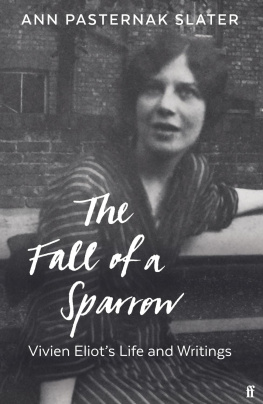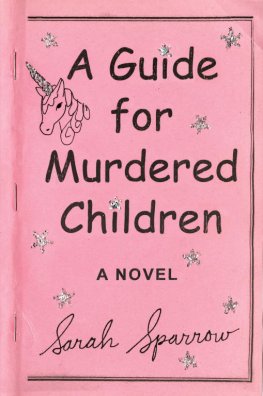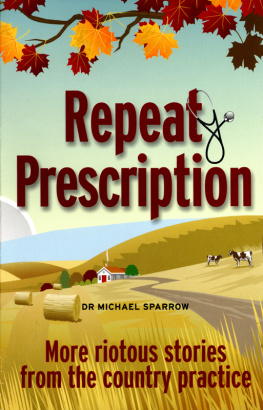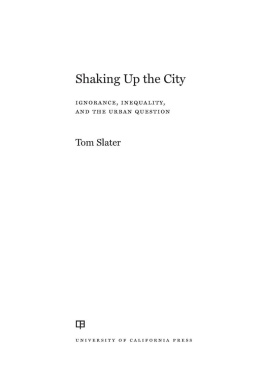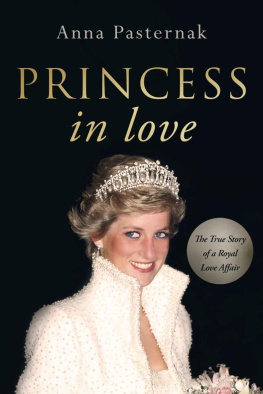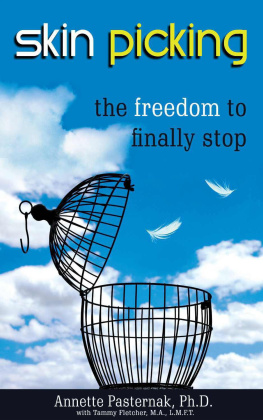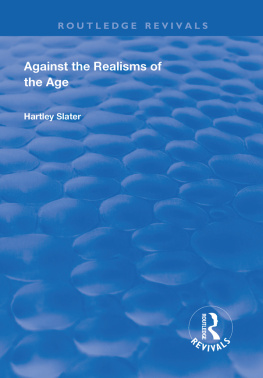Ann Pasternak Slater - The Fall of a Sparrow
Here you can read online Ann Pasternak Slater - The Fall of a Sparrow full text of the book (entire story) in english for free. Download pdf and epub, get meaning, cover and reviews about this ebook. year: 2020, publisher: Faber & Faber, genre: Non-fiction. Description of the work, (preface) as well as reviews are available. Best literature library LitArk.com created for fans of good reading and offers a wide selection of genres:
Romance novel
Science fiction
Adventure
Detective
Science
History
Home and family
Prose
Art
Politics
Computer
Non-fiction
Religion
Business
Children
Humor
Choose a favorite category and find really read worthwhile books. Enjoy immersion in the world of imagination, feel the emotions of the characters or learn something new for yourself, make an fascinating discovery.
- Book:The Fall of a Sparrow
- Author:
- Publisher:Faber & Faber
- Genre:
- Year:2020
- Rating:4 / 5
- Favourites:Add to favourites
- Your mark:
- 80
- 1
- 2
- 3
- 4
- 5
The Fall of a Sparrow: summary, description and annotation
We offer to read an annotation, description, summary or preface (depends on what the author of the book "The Fall of a Sparrow" wrote himself). If you haven't found the necessary information about the book — write in the comments, we will try to find it.
The Fall of a Sparrow — read online for free the complete book (whole text) full work
Below is the text of the book, divided by pages. System saving the place of the last page read, allows you to conveniently read the book "The Fall of a Sparrow" online for free, without having to search again every time where you left off. Put a bookmark, and you can go to the page where you finished reading at any time.
Font size:
Interval:
Bookmark:

O I know I am utterly worthless, a sparrow.
I know it does not matter what becomes of me.
VIVIEN ELIOT to JOHN MIDDLETON MURRY ,
Sanatorium de la Malmaison, July 1926
For an annotated edition of Vivien Eliots complete diaries, and a selection from her ledgers, please visit www.tseliot.com/vivien
- Part I:
LIFE - Part II:
WRITINGS
I have followed the editors of The Letters of T. S. Eliot in regularising Vivien/Vivienne Haigh-Woods name to Vivien Eliot. The spellings of Viviens fictional heroine Sibylla/Sybilla and her friend Felice/Felise have been similarly regularised to Sibylla and Felice.
Viviens complete archive at the Bodleian Library, Oxford, was scanned for this edition. It is listed in Appendix 3, p.740. The Librarys call-numbers for the archives various categories (Notebooks, Diaries, Ledgers, Loose Papers) all begin with MS.Eng.Lett. or MS. Eng.Misc, followed by a group of a single letter and two or three numbers (c.624, for instance). I have given the full reference at the texts first appearance. Thereafter, it is designated by the three- or four-figure cluster, followed by the scan-number(s) of the sheet(s) in question, thus: c.624 [0012] or c.624 [01230125].
The following abbreviations and symbols are used in Life (for a full list of conventions and abbreviations covering the whole volume, see Conventions and Abbreviations in Writings, p.505).
| AMS | authorial manuscript |
| ATS | authorial typescript |
| \ / | insertion above the line, or overwriting deleted text, e.g. the\their/ |
| < > | encloses material from elsewhere on the ATS/AMS |
| | | new line |
| || | new paragraph |
Vivien first mentions her archive in her Diary for 1934. It was the nineteenth anniversary of her marriage to Eliot, who had left her two years previously. The entry begins bitterly, and ends in pride:
what an invaluable gift I have made to the Bodleian Library Oxford. I must make a note to my Will that the papers & M.S.S. & Diaries are not to be used in any biography & not to be paraphrased but published if published at all, without alterations.
(1934 Diary, 26 June)
A year later, she visited Oxford twice, and was shown around the Bodleian by one of its staff. She was amazed by the Librarys holdings, and above all by the wonderful way in which they are preserved, & cared for & every little bit of torn paper is preserved. And the hand printed and illuminated books are not unlike my Ledgers. That observation gave her a welcome licence to hoard all her papers, including the earliest scraps and the full manuscript drafts of her fiction, in both her hand and Eliots, and the disorderly miscellany of trivia pasted into her last, handsomely bound Ledgers.
Viviens archive, as held by the Bodleian, consists of:
Four Diaries, for 1914, 1919, 1934, and 1935. Unfortunately, no others survive. Vivien and Eliot met and married in 1915; he left her definitively in 1933. Only one Diary covers a year of their life together. In the last two Diaries, Vivien refers to significant dates in preceding years, sometimes expanding on them. The Diaries missing from the Bodleian collection were apparently destroyed by fire after she died, while still in the familys possession.
Three notebooks and a loose-leaf box containing drafts of her published and unpublished fiction at various stages. In the first years after Eliots departure, Vivien worked hard sorting out these manuscripts and typescripts, which were composed for Eliots Criterion in 19245. Only thirteen items were actually published by him. The rest appear here in their entirety, many for the first time.
Three Account Books, laboriously maintained by her under Eliots guidance, principally during their last two years together, 19302.
Five Ledgers doubling as scrapbooks, deriving from her last years at liberty before she was committed to Northumberland House in 1938.
For their Bodleian catalogue numbers, see Appendix 3 in Writings.
*
Vivien had good reason to be protective of her own after-life. As her mental health deteriorated in the 1920s, she became painfully aware of her transitory episodes of lunacy, freely admitted in her letters and last Diaries. After her death, what was originally mere contemporary gossip acquired a documentary authority for later writers, while the actual facts were so anodyne they vanished from sight. The typical distortions dogging her life can be illustrated by a single example.
By 1935, three years after Eliot left her, Vivien had finally plucked up the courage to call occasionally at Faber & Faber and ask for her husband. The women on the staff were unfailingly kind, but firm. He was never to be seen. On 16 March she noted in her Diary, Passing 24 Russell Square I put a bit of chocolate in the letter box and left a card for Margaret Smith. In Michael Hastingss play Tom and Viv (1984), Eliot, still living with Vivien, grills her about her latest eccentricity. He is using a doctors inclusive we to worm the truth out of her:
We had a fit of pique outside my office. We got into a taxi. And went straight home. We got out the largest tureen in the kitchen. Filled it with lots of chocolate. Boiled it for a while. Took it downstairs. Straight back to Fabers office. And gently tipped all the chocolate through the letter box. We do accept that is what happened?
Many people did accept that was what happened. Hastings had assured them of it. In his introduction to the play, he said that, even though chronology was distorted, every line of dialogue in Tom and The farcical story stuck. Vivien had boiled the chocolate (in a china tureen), and poured it into the Faber letterbox with the aid of a petrol funnel. Vivien admitted it.
Hastings had some excuse. His play is fiction and its last, invented scene describing Viviens funeral is moving. Responsible biography should be another matter. Hastings claimed that his work might be called critical fiction, a form he thought could extend the writer to areas which might be lost to the plain biographer [] And biography itself might be a poor tool, a kind of fiction on crutches.
Viviens only biography so far, Painted Shadow by Carole Seymour-Jones, was published in 2001. It covered and discovered an extraordinary range of unpublished material from a number of sources, stretching far beyond the English and American library collections to interviews and papers in private hands. Material concerning the sexual relationships enjoyed by Bertrand Russell was particularly extensive. It was very well received, but should be read with caution. It is often highly speculative, wilfully inaccurate, and loyally tendentious defending Vivien and unmasking Eliot as an exploitative husband and a drunken homosexual philanderer.
Eliot biographers are naturally tempted, like Seymour-Jones, to extract from Eliots works a subjective autobiography hypothetically embedded in his poetry another kind of fiction on crutches. There is a contrary principle, surprisingly hard to sustain: to rely exclusively on primary sources, and, as far as possible, to avoid all conjecture. At the heart of Viviens archive lie Viviens own short stories, sketches, fictional fragments. In them, she portrayed her own life, and her and Eliots relationship, with the detachment Eliot associated with a mans mind. For this he briefly rated her work high. Yet Viviens fiction cannot stand on its own: there is too little, and it is fragmentary. Viviens life-story has not yet been told properly. This is important, not only for Viviens sake, and as the necessary context for her autobiographical fiction, but for a better understanding of Eliot, and their complex relationship. To do so, I have divided this book into three parts: Viviens
Font size:
Interval:
Bookmark:
Similar books «The Fall of a Sparrow»
Look at similar books to The Fall of a Sparrow. We have selected literature similar in name and meaning in the hope of providing readers with more options to find new, interesting, not yet read works.
Discussion, reviews of the book The Fall of a Sparrow and just readers' own opinions. Leave your comments, write what you think about the work, its meaning or the main characters. Specify what exactly you liked and what you didn't like, and why you think so.

